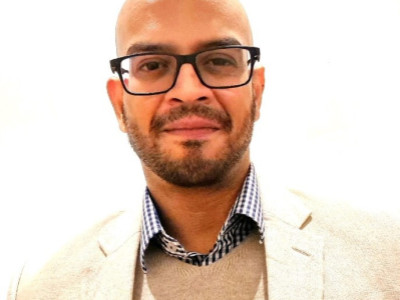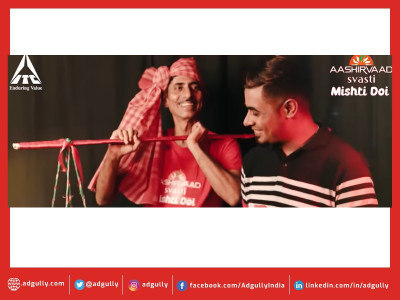Festival season and brands during the pandemic pandemonium
The festive season in India couldn’t have commenced on a more sombre and subdued note. August 11, 2020 marked Krishna Janmashtami. What would usually have been a joyous occasion with temple visits, distribution of prasad and the exuberant Govindas building colourful human pyramids to dizzying heights for Dahi-Handi, saw empty streets and people observing the festival within the safe confines of their homes.
The coronavirus sweeping across the country has crippled the massive festival industry that caters to religious gatherings for over one billion Hindus, 200 million Muslims and 32 million Christians. Most Indians are religious, and festivals are a time to express their faith – and spend money. Community festivals are also big business for the organisers, corporate sponsors and logistical suppliers of food, music, decorators, electricals and lights, transport, security and primarily the potters and idol-makers.
On Janmashtami, for instance, the Govindas – young participants from each mandal – sport branded jerseys loudly proclaiming popular brand associations as they try to break the matkas. The visuals of which are televised during prime time news shows, roundups and also featured in print media stories.
It is a win-win. The brands get additional exposure in ‘earned’ media, apart from fulfilling community relations, thereby maximising reach of the marketing rupee; while the communities get sponsorships for celebrations. While the corollary result of it is the associated industries receiving the capital-flow in a buoyant economy.
COVID-19 has put a halt to it all.
After Janmashtami, Ganapati festival will start from August 22 in Western India, and so will the 10-day long Onam festival in Kerala. In next 2 months, it will be Durga Puja for the Bengalis – which is a nearly Rs 4,000 crore industry with similar amount of marketing spends providing a fillip to it; and Dussehra in the rest of India. These will be followed by India’s biggest celebration – Diwali. Most Indian families make their annual personal and household purchases ahead of Diwali. Thereafter will come Christmas and rolling out of the New Year 2021. We recently saw Eid-Al-Adha being celebrated.
A study by the Associated Chambers of Commerce and Industry of India (Assocham) in 2015 calculated that the total spending during all the festivals put together stands at around Rs 20,000 crore, with a projected growth of around 30 per cent each year. Assocham had earlier described the money-spinning Indian festivals as “recession-proof”. But apparently, they are not pandemic proof.
Well, I have not changed my profession to a spiritual ‘Baba’ due to the pandemic for a quick buck, dishing remedies. Neither do I have the proclivity for it. I am looking at the market with the same alacrity of that jaded-eyed-average-comms-practitioner – the smart-ass PR guy.
Historically, festive season has been the time when campaigns and product rollouts happen. As already stated, marketers had traditionally spent big marketing bucks. But this year is an exception, and it is a no-brainer.
However, is your brand a ‘Friend-in-Need’ while celebrating community festivities in the pandemic pandemonium? In difficult times, it is even more important that brands be true to their beliefs and values, and act on them and support communities and there by the economy.
New rules for the festival of Ganesh Chaturthi in Maharashtra will be in place. Chief Minister Uddhav Thackeray had earlier said that the height of the Lord Ganesha idols should be restricted to 4 feet and that devotees should avoid pomp and grandeur and huge public gatherings. In West Bengal, including Kolkata, Chief Ministers Mamata Banerjee has requested the community Puja Pandals to scale down too.
Considering such strict safety protocols in place due to the pandemic, how can new media and technology possibly help in keeping alive the community festive fervour and not dampen the spirit of the devotees? Here are a few suggestions, keeping the current sensitivities in mind:
Drive-in darshan and big-screen projections – In Kolkata, community puja pandals are considering drive-in darshan. Three Durga Puja committees in the city – all crowd-pullers and located within a 1-km stretch in South Kolkata – have joined hands to introduce a drive-in ‘darshan’ concept – an arrangement which would allow people to slow down their cars to take a look at the pandal and the Durga idol without having to alight from their cars. Large screen projections will be used for further decongestion of human gathering and for benefit of social-distancing.
In fact, all over Kolkata such clusters are being thought off so that viewers can view puja sitting in cars and vehicles. Similar effort can be done during Ganapati festivals and Diwali. These tools of communications are already available, we just need to modify and adapt.
Facbook Live – Community Mandals and Pujas can use Facebook Live and people can view sitting in the safety of their homes.
Video-relay through cable channels – Remember ‘In-Cable’ network used to do it earlier, and even does the same during Ganapati immersion by telecasting the immersion live. They can do so for all days of the 11-day Ganapati festival and 7 days of Durga Puja. What it needs is a group of Ganapati Mandal and puja organisers to come together to make the proposal. I don’t think sponsorship will be a hindrance and crews in protective gears can film and relay and viewers can watch safely from their homes.
TV channel capsule programming – Provide more time for community festival coverage.
Taking cue from what the three community pujas in South Kolkata have decided to go ahead with, in all probability with the permission of the local government, after taking appropriate precautions, this could be replicated in community festivals elsewhere. And, brands have ample scope to chip in sponsorship and take part in communications.
What matters most for strong emotional comfort of the public at large, are the efforts of the government, in conjunction with the festival organisers and the brands, in reaching out to the customers and the community at large to hold their hands, make them feel connected and loved during festivals. It also provides a way to start rejuvenating the businesses of our country and kick-start the wheel of the economy.
(Devasis Chattopadhyay is the author of the book – ‘Without Prejudice’. He is a corporate reputation and brand management strategist, and a columnist.)

















Share
Facebook
YouTube
Tweet
Twitter
LinkedIn